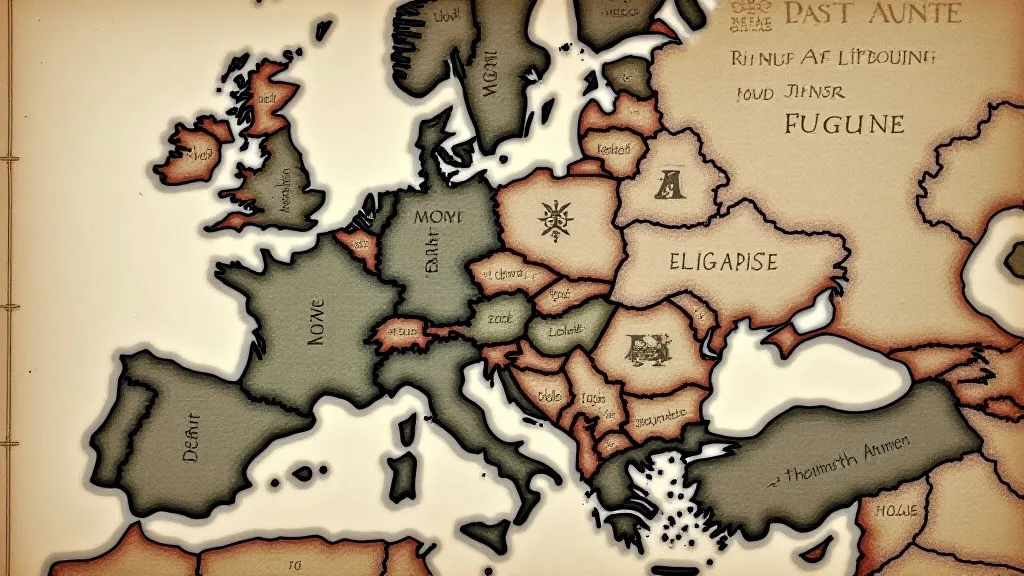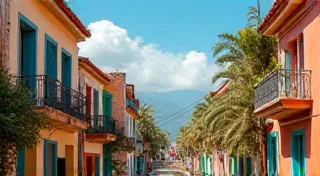The Cartographer's Compass: Navigating the Ephemeral Landscapes of Location Independence
The allure of digital nomadism—the promise of working from a beach in Bali, a cafe in Rome, or a mountaintop cabin—is powerfully seductive. We see the curated Instagram feeds, the smiling faces against exotic backdrops, and it seems effortlessly idyllic. But the reality, as with most things worth pursuing, is far more nuanced. Beyond the postcard-perfect images lies a complex terrain of fluctuating income, shifting social connections, and the constant recalibration of self. It’s a landscape that demands not just wanderlust, but an inner compass—a deliberate construction of a personal map in a world defined by transient experiences.
I remember the first time I truly understood this. I was in Vienna, attempting to restore an antique accordion. It wasn’t part of my carefully planned itinerary, more a whim born from a dimly lit antique shop and a sudden, inexplicable connection to the instrument’s history. The accordion itself was a magnificent beast; a 1920s instrument crafted from aged wood and intricately carved bellows. Its keys were ivory, yellowed with age, and the once vibrant felt had worn thin, producing a muffled, melancholic sound.

Restoring it wasn't just about replacing parts and tightening screws; it was a journey into the life of its creator, the hands that had played it, the music it had breathed. The accordion was a tangible link to a past I couldn’t fully comprehend, a testament to a skill that required years of dedicated practice. It struck me then that the digital nomad's life, in its own way, mirrored that process of restoration. We, too, are rebuilding, constantly patching and reassembling our lives in new environments, trying to coax harmony out of disparate experiences.
The Architecture of Impermanence
The digital nomad embraces impermanence. We intentionally sever physical roots – the familiar comfort of a neighborhood, the ease of established routines, the unwavering presence of lifelong friends. This act of severing, while liberating, can also be profoundly disorienting. It’s the equivalent of dismantling a beloved house, brick by brick, with the intention of rebuilding it elsewhere. The initial rush of freedom can quickly give way to a quiet ache of displacement, a feeling of being adrift.
Consider the history of cartography. For centuries, explorers relied on rudimentary tools and incomplete information, painstakingly charting unknown territories. Their maps were not static representations of the world; they were evolving documents, constantly revised and updated as new discoveries were made. Similarly, the digital nomad's life requires constant recalibration. What works in one location might not work in another. Income streams can dry up unexpectedly. Relationships, carefully nurtured, can dissolve as paths diverge.
This isn’s a failing. It's the natural consequence of choosing a life defined by movement. The key isn’t to cling to the illusion of stability, but to cultivate adaptability—the willingness to embrace change, to learn from setbacks, and to find joy in the unexpected.
The Burden of Perpetual Reinvention
The digital nomad isn’t just working remotely; they’re reinventing themselves constantly. Every new location demands a period of acclimatization – not just to the climate and cuisine, but also to a new rhythm of life, a different social context. We learn to navigate unfamiliar systems, to negotiate new customs, and to build connections from scratch.
This constant reinvention can be exhausting. It requires a level of emotional intelligence and resilience that isn’t always easy to summon. There's a subtle pressure to always be “on,” to project an image of effortless adventure, even when struggling with loneliness or uncertainty. It’s a performance, of sorts, and maintaining that facade can be surprisingly draining.

Building Your Internal Map
So, how do we navigate this ephemeral landscape? How do we maintain a sense of purpose and belonging when our physical roots are intentionally severed? The answer, I believe, lies in building an internal map—a set of values, practices, and connections that provide stability and direction amidst the constant flux.
This internal map isn't something that’s simply discovered; it’s something that’s deliberately constructed. It involves taking time for introspection, identifying what truly matters, and aligning our actions accordingly. It means cultivating meaningful connections, even if those connections are virtual or transient. It means finding ways to nurture our physical and mental well-being, even when our routines are disrupted.
For me, that internal map includes a few key elements: consistent journaling to process experiences and emotions, regular exercise to maintain physical health, and pursuing creative outlets – like learning to restore antique instruments – that ground me in tangible skills and provide a sense of accomplishment. The precision needed to repair an accordion bellows, the meticulous care required to re-glue an ivory key—these activities demand focus and patience, qualities that are easily lost in the whirlwind of constant travel.
The Value of the 'Why'
Ultimately, the most important compass for the digital nomad is a strong sense of ‘why.’ Why are we choosing this life? What are we hoping to achieve? A clear ‘why’ provides a framework for decision-making, a source of motivation during difficult times, and a reminder of the values that underpin our journey.

The digital nomad’s life isn't easy. It requires courage, resilience, and a willingness to embrace discomfort. But for those who are willing to navigate the complexities, the rewards – the freedom, the adventure, the personal growth – can be immeasurable. It’s a life built not on bricks and mortar, but on a compass, a map, and the unwavering belief in the power of reinvention.





